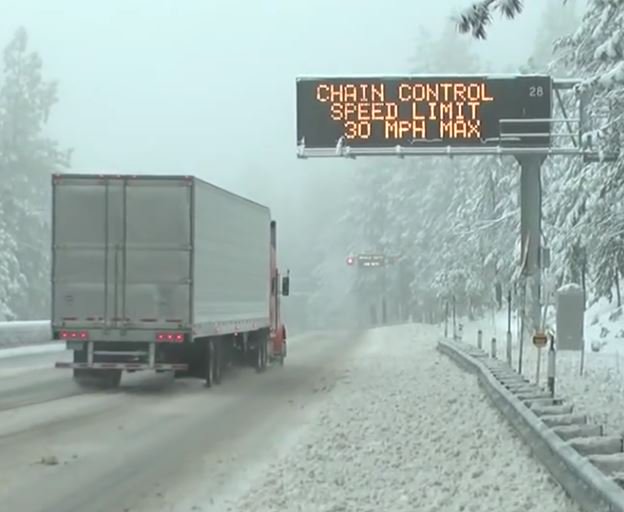The short answer is yes. Tire chains are used over many industries by owner-operators and national fleets worldwide. Read more to find out about chain laws in your area!
Compliance with prevailing laws are always a concern for drivers especially when traveling across borders. As with any mode of transportation, being informed about the laws and regulations at your destination are a necessary part of your travel preparation.

Tire Chains – Legal or Illegal?
While chain laws vary by state and country, Onspot Automatic Tire Chains are DOT approved in all 50 states and approved for use in chain control areas. However, this does not mean that you won’t encounter misinformed enforcement officials.
We have heard from drivers that receive thumbs up on one side of a mountain and are stopped on the other side. This is not a right or wrong situation, it is simply the need to be informed and prepared for driving in winter conditions and in chain control areas. Experienced drivers have learned to navigate these situations but new drivers need to be ready for when these circumstances arise.
Tire Chains in Canada
In the Canadian province of Ontario, the Highway Traffic Act specifies that “no vehicle shall be operated or object moved or upon any highway with any flange, rib, clamp or other device attached to its wheels, or made part thereof, which will injure the highway.” The HTA’s stance on tire chains, studded tires and the like is to prevent damage to pavements.
When used properly, Onspot Automatic Tire Chains will not damage the pavement. Upon encountering icy and/or snow conditions, the Onspots are deployed safely from inside the vehicle and disengaged when the chains are no longer needed.
According to the Ontario Ministry of Transportation, the occasional use of tire chains to drive through icy or snow conditions is not illegal. However, continuous use of traction devices on dry paved roads is illegal in Ontario.
Preparation is Key
Traveling through multiple states/provinces and countries whether here or in Europe, preparation is key, particularly in winter conditions. Drivers must prepare their vehicles for whatever conditions they may encounter.



